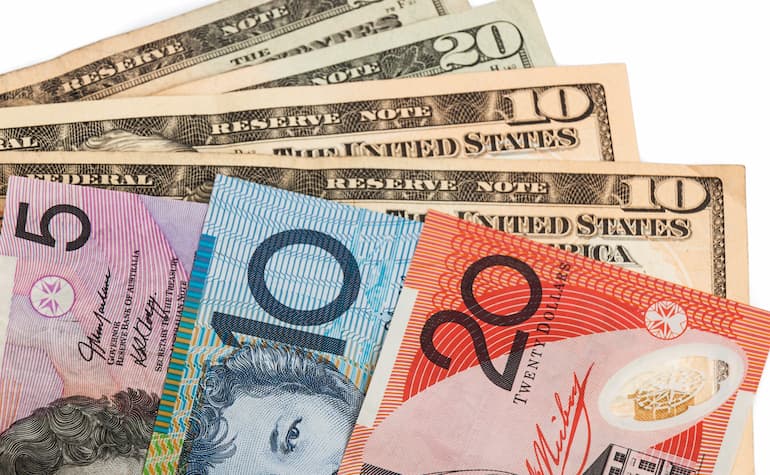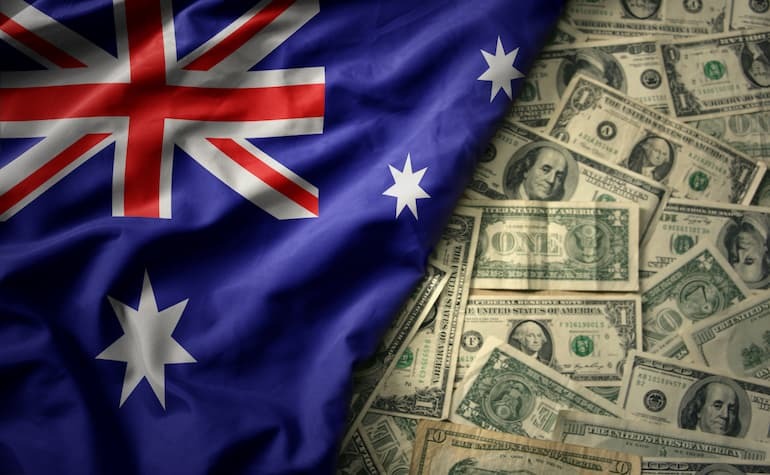市場新聞與洞察
透過專家洞察、新聞與技術分析,助你領先市場,制定交易決策。

Multi-Timeframe (MTF) analysis is not just about checking the trend on the daily before trading on the hourly; ideally, it involves examining and aligning context, structure, and timing so that every trade is placed with purpose.
When done correctly, MTF analysis can filter market noise, may help with timing of entry, and assist you in trading with the trending “tide,” not against it.
Why Multi-Timeframe Analysis Matters
Every setup exists within a larger market story, and that story may often define the probability of a successful trade outcome.
Single-timeframe trading leads to the trading equivalent of tunnel vision, where the series of candles in front of you dominate your thinking, even though the broader trend might be shifting.
The most common reason traders may struggle is a false confidence based on a belief they are applying MTF analysis, but in truth, it’s often an ad-hoc, glance, not a structured process.
When signals conflict, doubt creeps in, and traders hesitate, entering too late or exiting too early.
A systematic MTF process restores clarity, allowing you to execute with more conviction and consistency, potentially offering improved trading outcomes and providing some objective evidence as to how well your system is working.
Building Your Timeframe Hierarchy
Like many effective trading approaches, the foundation of a good MTF framework lies in simplicity. The more complex an approach, the less likely it is to be followed fully and the more likely it may impede a potential opportunity.
Three timeframes are usually enough to capture the full picture without cluttering up your chart’s technical picture with enough information to avoid potential contradiction in action.
Each timeframe tells a different part of the story — you want the whole book, not just a single chapter.

Scalpers might work on H1-M15-M5, while longer-term traders might prefer H4-H1-H15.
The key is consistency in approach to build a critical mass of trades that can provide evidence for evaluation.
When all three timeframes align, the probability of at least an initial move in your desired direction may increase.
An MTF breakout will attract traders whose preference for primary timeframe may be M15 AND hourly, AND 4-hourly, so increasing potential momentum in the move simply because more traders are looking at the same breakout than if it occurred on a single timeframe only.
Applying MTF Analysis
A robust system is built on clear, unambiguous statements within your trading plan.
Ideally, you should define what each timeframe contributes to your decision-making process:
- Trend confirmed
- Structure validated
- Entry trigger aligned
- Risk parameters clear
When you enter on a lower timeframe, you are gaining some conviction from the higher one. Use the lower timeframe for fine-tuning and risk control, but if the higher timeframe flips direction, your bias must flip too.
Your original trading idea can be questioned and a decision made accordingly as to whether it is a good decision to stay in the trade or, as a minimum action, trail a stop loss to lock in any gains made to date.
Putting MTF into Action
So, if the goal is to embed MTF logic into your trade decisions, some step-by-step guidance may be useful on how to make this happen
1. Define Your Timeframe Stack
Decide which three timeframes form your trading style-aligned approach.
The key here is that as a starting point, you must “plant your flag” in one set, stick to it and measure to see how well or otherwise it works.
Through doing this, you can refine based on evidence in the future.
One tip I have heard some traders suggest is that the middle timeframe should be at least two times your primary timeframe, and the slowest timeframe at least four times.
2. Build and Use a Checklist
Codify your MTF logic into a repeatable routine of questions to ask, particularly in the early stages of implementing this as you develop your new habit.
Your checklist might include:
- Is the higher-timeframe trend aligned?
- Is the structure supportive?
- Do I have a valid trigger?
- Is risk clearly defined?
This turns MTF from a concept into a practical set of steps that are clear and easy to action.
3. Consider Integrating MTF Into Open Trade Management
MTF isn’t just for entries; it can also be used as part of your exit decision-making.
If your higher timeframe begins showing early signs of reversal, that’s a prompt to exit altogether, scale out through a partial close or tighten stops.
By managing trades through the same multi-timeframe approach that you used to enter, you maintain logical consistency across the entire lifecycle of the trade.
Final Action
Start small. Choose one instrument, one timeframe set, and one strategy to apply it to.
Observe the clarity it adds to your decisions and outcomes. Once you see a positive impact, you have evidence that it may be worth rolling out across other trading strategies you use in your portfolio.
Final Thought
Multi-Timeframe Analysis is not a trading strategy on its own. It is a worthwhile consideration in ALL strategies.
It offers a wider lens through which you see the market’s true structure and potential strength of conviction.
Through aligning context, structure, and execution, you move from chasing an individual group of candles to trading with a more robust support for a decision.


The RBA minutes of their June meeting where another surprise hike had most of the market off side were released today, and they were surprisingly dovish. The board made clear the decision between a hike and hold was finely balanced and seems to suggest further hikes may require a high bar for inflation readings to sway them. AUD reaction was swift with AUDUSD selling off around 50 pips as the sellers finally took charge after a grinding rally upwards in AUD that had made nervous wrecks of the shorts.
The Key level of 0.6800 on the AUDUSD has again come into play, with it being almost impenetrable resistance at the top of the AUDUSD range, now it seems as is quite often the case, turning into major support. Drilling down to the 5 minute chart the buying support at 0.68 is obvious, with a decent bounce and hold of 0.6800 as the RSI reading moved into oversold territory. These technical levels will likely drive price action in todays remaining session, no further news is scheduled for Australia and the US calendar is extremely light after their long weekend.
For short term technical traders of the AUDUSD the 0.6800 level is key. Long above, short below while this level remains a major resistance/support level.


In yesterday’s session, the AUDUSD pair experienced a decline of nearly 1%, erasing the gains it had achieved over the past few days. This retracement arrives as the USD displays signs of renewed strength ahead of an upcoming speech by Fed Chair Jerome Powell. Market participants are eagerly awaiting Powell's remarks for to see if he drops any hints on the Fed’s plans.
As anticipation builds for Powell's speech, scheduled for tomorrow, market observers are on high alert for any indications regarding the trajectory of interest rates. They are particularly keen on understanding whether the Fed's rate hikes are done or if further hikes are on the cards. Additionally, the market will scrutinise the language Powell uses, gauging its hawkishness or dovishness to decode the central bank's future strategies.
These cues will aid in forecasting potential rate cuts once inflation subsides to desired levels. Technically, the AUDUSD pair hit a recent low of 0.63642 on August 17th, marking its lowest point since November 2022. There is considerable downside before finding the next significant support level around 0.62.
On the 1-hour timeframe, the Relative Strength Index (RSI) is edging close to oversold conditions, while there appears to be a minor horizontal support level holding price just above 0.64. Furthermore, the recent breach of a short-term diagonal support trend is worth noting. The market will closely monitor whether this trend can be reestablished over the coming days.
Overall, as the USD gains momentum leading up to Powell's speech, his comments will likely steer the pair's immediate movements.


Apple has had a spectacular start to 2023, locking in 7 consecutive positive months and putting in an increase of 52.16% year to date at its peak. However, August so far isn’t looking as healthy. Despite the positive financial performance beating Q3 earnings expectations, Apple shares are down 8.48% for the start of August.
Profit taking after 7 green months may be a factor in the recent decline, so the coming days will be key to see if this is a short-term fall or the beginning of a longer-term downtrend. From a technical perspective, price has fallen through an upward trend line that begun at the start of 2023. Price appears to have landed at a key support & resistance level around $177-179.
This temporary bounce also lines up almost exactly at the 2022 yearly open price of $177.83, which adds more strength to this support level. Holding this support level is critical for the price, as a failure to do so could potentially lead to further declines, with the next support level likely around $155-157. Additionally, the Relative Strength Index (RSI) on the daily chart recently touched an oversold level of 30, followed by a slight bounce.
Traders will be watching to see if the two factors of RSI oversold and price at a key support level will be enough to stall the recent decline and potentially be a pivoting point to send price back north.


Gold has always been one of the most popular and highly traded markets for CFD traders, especially recently as its price has risen to test its all-time highs. It’s easy to see why, Gold has been a store of value throughout history and now with institutional grade spreads and zero commission there has never been a better time for GO Markets clients to trade this exciting market. At GO Markets we offer our clients the world’s most popular gold trading platforms in Metatrader 4/5 and C-Trader, as well as ultra-fast execution for manual traders these CFD trading platforms also give you the ability to automate gold trading strategies.
Advantages of trading gold CFDs with GO Markets: Institutional grade spreads and ZERO commission for all account types. Trade 23 hours a day, unlike an ETF or gold miner listed on a stock exchange that is only open while that stock exchange is open. Leverage – from 20:1 to 500:1 depending on your account type.
Flexibility in position sizing starting from 0.01 lots. Fundamental forces that drive the price of gold While no one reason can be fully attributed to movements in the price of gold, there are an important few fundamental drivers that will influence the price of gold and whose relationship has been time tested. None of these on their own should be used as a sole reason to enter a position, but having the fundamentals on your side will certainly give you an advantage.
The main fundamental drivers in my experience are (not an exhaustive list by any means!) The gold price relationship to US bond yields Safe haven flows Central Bank buying Real Yields and Gold The inverse relationship between bond yields and the price of gold is well established, especially the real yield on the US 10-year bond. The reason for this mainly is because the real yield (the real yield is calculated by subtracting inflation expectations from the actual yield of the US 10-year government bond) is seen as the “risk free” rate on an investment, the higher the “risk free” rate is, the less attractive a non-yield paying asset like gold is. As both gold and bonds are seen as safe havens, they are competing for the same investors.
See the screenshot below to illustrate this point. Source: longtermtrends.net The gold line is the price of gold, the black line is the inverted real yield of 10-year treasuries. This chart stretches back 16 years, but the close relationship has gone back much longer than that.
This chart is showing that historically, gold is expensive at the moment as compared to real yields as can be seen by the growing gap between the two recently, this interesting decoupling has been mainly caused by our second fundamental driver – safe haven flows. Safe Haven Flows Geopolitical strife with war in Ukraine and doubts over the health of the global economy got things started with the surge we have seen in gold prices in the last 5 months, but things went into overdrive in March 2023 when Signature bank and Credit Suisse collapsed, bring into question the integrity of the banking system and massive safe haven flows into gold which has pushed the price to within touching distance of hitting all-time highs. With the banking crisis seemingly under control (for now maybe?) gold has lost some momentum, but the fact it is holding around these elevated prices indicates some investors may not think the crisis is over just yet.
Central Bank Buying Central banks are some of the biggest buyers of gold on the open market, and 2022 saw the most central bank buying of gold on record. Whatever the reasons for this, such massive amounts of buying would be seen as a bullish sign for the gold price (if it continues). GO Markets clients also have access to Trading Central which automatically detects technical set ups for our traders to add to their decision making.
Trading Central can be accessed by account holders through their Client Portal. Trading Central Pattern example below: Feel free to contact the GO Markets team if you have any questions on trading gold CFDs.


World’s largest entertainment company The Waly Disney Company (NYSE: DIS) announced second quarter financial results ended April 1, 2023, after the market close on Wall Street on Wednesday. Company overview Founded: October 16, 1923 Headquarters: Team Disney Building, Walt Disney Studios, Burbank, California, United States Number of employees: 220,000 (2022) Industry: media, entertainment Key people: Mark Parker (chairman), Bob Iger (CEO) The results Walt Disney reported revenue of $21.815 billion for the quarter vs. $21.795 billion expected. Revenues were up by 13% vs. same period last year.
Earnings per share fell slightly short of expectations at $0.93 per share (down by 14% year-over-year) vs. $0.933 per share estimate. Disney+ subscribers fell from 161.8 million to 157.8 million in the quarter. It has now lost 6.4 million subscribers over the last two quarters.
Company commentary "We’re pleased with our accomplishments this quarter, including the improved financial performance of our streaming business, which reflect the strategic changes we’ve been making throughout the company to realign Disney for sustained growth and success," Robert A. Iger, CEO of the company said in a statement. "From movies to television, to sports, news, and our theme parks, we continue to deliver for consumers, while establishing a more efficient, coordinated, and streamlined approach to our operations," he concluded. The stock was down by over -8% on Thursday, trading at around $92.66 a share.
Stock performance 1 month: -8.31% 3 months: -8.31% Year-to-date: +6.42% 1 year: -11.36% Walt Disney price targets Morgan Stanley: $120 Wells Fargo: $147 Deutsche Bank: $135 Barclays: $107 Guggenheim: $130 Citigroup: $130 JP Morgan: $135 Credit Suisse: $133 Bank of America: $135 Walt Disney is the 63 rd largest company in the world with a market cap of $170.34 billion, according to CompaniesMarketCap. You can trade The Waly Disney Company (NYSE: DIS) and many other stocks from the NYSE, NASDAQ, HKEX, ASX, LSE and DE with GO Markets as a Share CFD. Sources: The Waly Disney Company, TradingView, MarketWatch, MetaTrader 5, CompaniesMarketCap, Wikipedia, MarketBeat


Uber Technologies Inc. (NYSE: UBER) announced first quarter results before the market open in the US on Tuesday. World’s largest ridesharing company beat analyst expectations for the quarter, sending the stock price higher. Company overview Founded: March 2009 Headquarters: San Francisco, California, United States Number of employees: 32,800 (2022) Industry: Transportation Key people: Ronald Sugar (Chairman), Dara Khosrowshahi (CEO) The results Uber reported revenue of $8.823 billion (up by 29% vs Q1 2022) vs. $8.703 billion expected.
The company reported loss per share of -$0.08 per share vs. estimate of -$0.087 loss per share. CEO commentary "We significantly accelerated Q1 trip growth to 24% from 19% last quarter, with Mobility trip growth of 32%, as a result of improved earner and consumer engagement,” Dara Khosrowshahi, CEO of Uber said in a letter to shareholders. "Looking ahead, we are focused on extending our product, scale and platform advantages to sustain market-leading top and bottom-line growth beyond 2023," Khosrowshahi added. The stock was up +11.55% on Tuesday at $36.53 a share.
Stock performance 1 month: +16.34% 3 months: +18.07% Year-to-date: +47.67% 1 year: +23.92% Uber price targets Wedbush: $44 Needham: $54 RBC Capital: $46 Deutsche Bank: $44 JMP Securities: $55 Wolfe Research: $45 UBS: $48 JP Morgan: $52 Wells Fargo: $53 Uber is the 196 th largest company in the world with a market cap of $73.54 billion, according to CompaniesMarketCap. You can trade Uber Technologies Inc. (NYSE: UBER) and many other stocks from the NYSE, NASDAQ, HKEX, ASX, LSE and DE with GO Markets as a Share CFD. Sources: Uber Technologies Inc., TradingView, MarketWatch, MetaTrader 5, Benzinga, CompaniesMarketCap, Wikipedia

